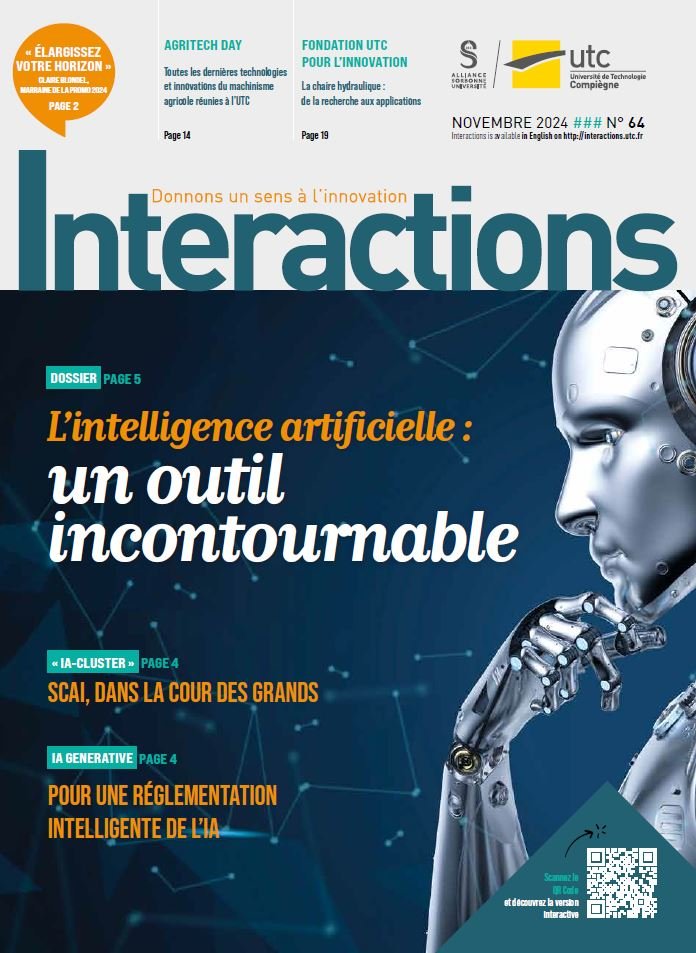Molecule banks help discover medicinal drugs against leukaemia

Why not imagine randomly test screening millions of molecules to seek out the rare formula that could interact efficiently with a protein targeted in leukaemia patients? This is the original approach adopted by Bérangère Bihan-Avalle and her research team that led to the lodging of a patent claim for two molecules that potentially might prove attractive in the fight against chronic leukaemia.
In the field of medical research, chance occasionally plays a role. If the staphylococci bacterial culture studied by Alexander Fleming in 1928 had not been contaminated by a wind-borne fungus penicillium notatum [his lab. neighbour and assistant had inadvertently left the window open during the night], he probably would not have discovered that very important antibiotic penicillin.
But serendipity is not the leitmotiv of the approach developed by Professor Bérangère Bihan-Avalle, in charge of the theme Molecular Diversity and Biocatalysis, in her efforts to discover new molecules to fight leukaemia. Nonetheless, there is a random factor in her work.
“Our team is specialized in using molecule banks with millions or even billions of samples, so that we can identify those that potentially could interact with a predefined target”, explains the research scientist — who indeed recently was successful in identifying two molecules that could be uses in cases of chronic myeloid leukaemia.
A proliferation of undifferentiated cells
Leukaemia are cancers of white blood cells that can be different depending on the type of cell affected. Among these there are the myeloid cells or the lymphocyte cells which play an important role in our immunity system. These cell undergo genetic mutations or chromosome translocations (where DNA fragments shift from one chromosome to another) and lead to an unusually high protein presence (e.g., the STAT5** protein) which is a factor for genetic transcription and inter-cell signalling systems.
When constantly activated, this protein is responsible for anarchic cell proliferation which is the symptom of leukaemia. The cells totally invade the bone marrow and then the patient’s blood stream.**signal transducer and activator of transcription.
Multiplying the number of potential molecules
In a partnership with the Oise Department Ligue contre le Cancer (a charity fund) and with financial support from the Picardie Regional authorities, Bérangère Bihan-Avalle and her team use oligonucleotide (DNA fragments) banks seeking those that could have an effect on cancer cells.In vitro, the scientists have tested millions of “candidates” to isolate those that may interact with the famous STAT5 protein.
“Our objective is to screen synthesized oligonucleotide banks randomly with the hope that we shall find candidates capable of inhibiting or inactivating the STAT5 protein”, explains Bérangère Bihan-Avalle. Two molecules have indeed been identified in the process and are being tested currently to evaluate their effects on proliferation of leukemia cells.
Avoiding any preconceived ideas
“Our approach had the advantage of allowing us to begin work without any a priori ideas about the molecules we were seeking”, underscores Bérangère Bihan-Avalle who hopes to discover some innovative medicinal substances. The method is very different from that used in the pharmaceutical sector actors who generally take their inspiration from an already known molecule and derive a variant that proves more efficient or better adapted to the case, disorder or illness.
Using molecule banks enables you to discover substances that it would be difficult to conceive via a rational approach. Today’s medicinal drugs used to fight leukaemia unfortunately only have limited efficiency. The current rate runs between 80% and 30% depending on the type of leukaemia. There is no drug as yet that specifically deals with the STAT5 protein.
Taking action in the heart of the cells
Two molecules are subject to a patent claim procedure at the moment, but the work continues, notably to understand how these molecules can operate inside the targeted cells. Using molecule banks enables you to discover substances that it would be difficult to conceive via a rational approach. Today’s medicinal drugs used to fight leukaemia unfortunately only have limited efficiency. The current rate runs between 80% and 30% depending on the type of leukaemia. There is no drug as yet that specifically deals with the STAT5 protein. Taking action in the heart of the cells Two molecules are subject to a patent claim procedure at the moment, but the work continues, notably to understand how these molecules can operate inside the targeted cells.
“One difficulty resides in trying to ‘design’ an active molecule capable of penetrating the cell membrane without altering its action capacity on the protein”, explains Bérangère Bihan-Avalle, who adds that this thrust of her research has only just begun. In the long run, it is envisages that the team will be able to test the molecules identified on human tumours transplanted to animals, if and when partnerships in this direction have been agreed with the pharmaceutical laboratories interested. For the moment, her research is entering its preliminary phase but with the prospect of a development period lasting some ten years.
“We need to take our time to characterize the molecules we shall have identified and to publish the research results before we set up any partnership with a private sector laboratory”, concludes Bérangère Bihan-Avalle, whose opinion it is that industrial pressure could prove counterproductive. Research on these oligonucleotides potentially capable of acting on targeted proteins is too recent and, as such, has made the pharmaceutical laboratories relatively reticent, for the time being. To date, only one molecule of this category has been made into a medical drug.




